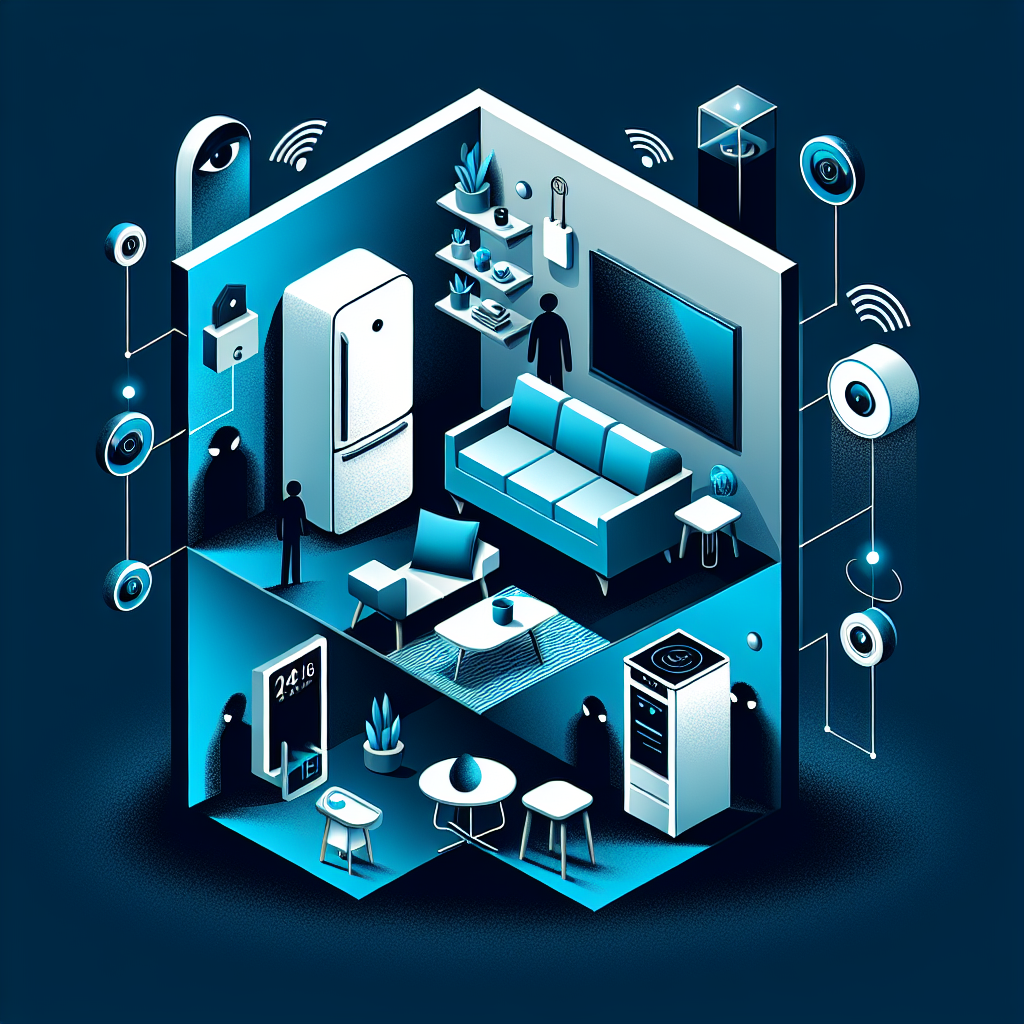With the rise of smart technology in homes, the convenience and connectivity that Internet of Things (IoT) devices offer have become a staple in many households. From smart thermostats to connected security cameras, these devices promise to make our lives easier and our homes safer. However, with this convenience comes a hidden risk that many homeowners may not be aware of: the potential compromise of their privacy.
IoT devices are designed to collect and transmit data to and from the cloud, where it can be analyzed, stored, and used to make the devices smarter and more responsive. While this data can be useful for improving the functionality of these devices, it also poses a significant risk to our privacy. Hackers can exploit vulnerabilities in IoT devices to access sensitive information, such as personal data, passwords, and even live video feeds from security cameras.
One of the main ways that hackers can compromise the privacy of smart homes is through the interception of data transmitted between devices and the cloud. This data can include sensitive information, such as email addresses, credit card numbers, and even voice recordings. Once this data is obtained, hackers can use it to steal identities, commit fraud, or even gain physical access to homes.
Another risk of IoT devices is the potential for unauthorized access to the devices themselves. Hackers can exploit vulnerabilities in the devices’ software or hardware to gain control of them remotely. This can allow hackers to spy on homeowners, disable security systems, or even cause physical harm by manipulating smart appliances.
To protect your privacy in a smart home, it is essential to take proactive steps to secure your IoT devices and data. Here are some tips to help safeguard your privacy:
1. Secure your network: Use strong passwords for your Wi-Fi network and change them regularly. Enable encryption on your network to prevent unauthorized access to your data.
2. Update your devices: Make sure to regularly update the software on your IoT devices to protect against known vulnerabilities. Many manufacturers release updates to patch security flaws, so be sure to install them as soon as they become available.
3. Use strong passwords: Create unique, complex passwords for each of your IoT devices to prevent unauthorized access. Avoid using default passwords or easily guessable passwords, such as “123456” or “password.”
4. Enable two-factor authentication: Many IoT devices offer two-factor authentication as an additional layer of security. This requires a second form of verification, such as a text message or email code, to access the device.
5. Disable unnecessary features: Some IoT devices come with features that may pose a privacy risk, such as voice assistants that are always listening. Disable these features if you don’t need them to minimize the risk of unauthorized access.
6. Monitor device activity: Keep an eye on the activity of your IoT devices to detect any unusual behavior, such as spikes in data usage or unauthorized access attempts. This can help you identify potential security threats before they escalate.
7. Be cautious with sharing data: Be mindful of what data you share with your IoT devices and only provide the information that is necessary for them to function. Avoid sharing sensitive information, such as personal details or passwords, unless absolutely necessary.
By following these tips, you can protect your privacy in a smart home and reduce the risk of falling victim to hackers. However, it is essential to remain vigilant and stay informed about the latest security threats and best practices for securing IoT devices.
Frequently Asked Questions (FAQs):
Q: How can I tell if my IoT devices have been hacked?
A: Signs that your IoT devices may have been hacked include unusual activity, such as changes in settings, unexplained data usage, or unauthorized access to your devices. If you suspect that your devices have been compromised, disconnect them from the network immediately and contact the manufacturer for assistance.
Q: Are smart home devices secure?
A: While many smart home devices come with security features, they are not immune to hacking. It is essential to take precautions to secure your devices and data to minimize the risk of unauthorized access.
Q: Can hackers access my smart home devices remotely?
A: Yes, hackers can exploit vulnerabilities in IoT devices to gain remote access. This can allow them to spy on homeowners, steal sensitive information, or even cause physical harm by manipulating smart appliances.
Q: What steps can I take to protect my privacy in a smart home?
A: To protect your privacy in a smart home, secure your network, update your devices regularly, use strong passwords, enable two-factor authentication, disable unnecessary features, monitor device activity, and be cautious with sharing data.
In conclusion, while IoT devices offer a range of benefits for homeowners, they also pose hidden risks to our privacy. By taking proactive steps to secure our devices and data, we can minimize the risk of falling victim to hackers and protect our privacy in a smart home. Stay informed about the latest security threats and best practices for securing IoT devices to ensure that your smart home remains safe and secure.
